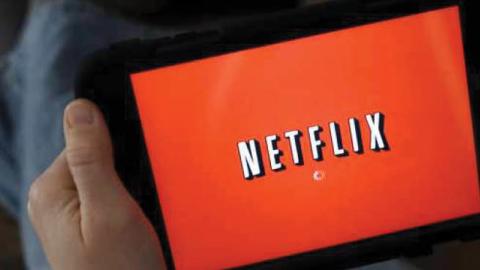The COVID-19 pandemic has forced millions of Americans to work and learn from home. The same goes for entertainment. Without movie theaters, concerts, and live sporting events to attend, Americans have been consuming more content at home than ever before, including videogames, broadcast TV, cable TV, and of course, Internet video.
Among video services, the greatest growth during the pandemic has been for over-the-top, or “OTT” streaming services. This, of course, should be no surprise—particularly in a work-from-home environment when both work and sleep schedules may be largely at a worker’s discretion. Rather than have to sit and wait for programs to air on traditional broadcast or cable TV services, or fumble with complicated time-shifting technologies, OTT consumers watch content on their own schedules.
Although there are several advertiser-supported OTT services, like YouTube, most growth is from paid subscriber-based OTT services like Netflix, Hulu, Amazon Prime Video, and Disney+. According to a recent report by BCG, these four services accounted for 69% of new OTT subscribers during the pandemic, and 54% of households watching more television are doing so with OTT. Countless other paid subscriber-based OTT services also exist, including HBO Max, Apple TV+, ESPN+, Crunchyroll, Quibi, and Comcast’s recently-launched Peacock.
Among premium subscriber-based OTT services, Netflix is the clear leader. The purveyor of the Emmy-nominated smash hit Tiger King has done extraordinarily well during the pandemic, adding 25 million subscribers to reach its current global total of 193 million. In the United States alone, Netflix has 72 million customers.
Consequently, today, as measured by market capitalization, the largest pure media company isn’t Comcast, or Disney, or any other traditional, venerable industry giant. Instead, it’s Netflix, with a market cap of around $220 billion—ahead of both Disney ($210 billion) and Comcast ($196 billion). As for Disney and Comcast, both companies would likely be in weaker financial positions without interests in their respective OTT subscriber services: Disney+, Peacock, and of course, Hulu.
Additionally, Amazon, Google, and other companies that don’t primarily focus on media have substantial OTT interests. Amazon and Google are each valued at over a trillion dollars—more than Netflix, Disney, and Comcast combined.
Year to date, Netflix’s market price has risen by over 50%. By comparison, most other major media companies have had stock price declines this year, led by Viacom, Discovery, and Fox, each off 29% or more.
Netflix’s growth hasn’t just been the result of COVID-19. Five years ago, Netflix wasn’t even one of the 10 largest global media companies. But since then, Netflix’s stock price has risen by an astronomical 325%. Among other major media companies over the same time period, Charter Communications has done well with 205% growth. Yet several media companies have had share price losses over that period, with Discovery, Dish, and Viacom’s prices shrinking 35% or more.
Although Netflix owes its success to many things, two in particular stand out. First, being Internet-based, Netflix and other OTT services are technologically nimble. Netflix and its competitors are able to innovate new features and expand to new devices and screens via simple software updates. And OTT subscribers can search, find, and watch content at their leisure. For cord-cutting and cord-never millennials and Gen Zers—an increasing share of the population—no other method of video entertainment makes sense. Thanks to OTT services, they can watch they want, when they want, and on whatever device they want, unshackled from the constraints of specialized hardware or a linear programming schedule. By comparison, traditional cable and broadcast TV programming is often constrained to appointment viewing via limited physical hardware: cable boxes and antennas connected to traditional TV sets.
Second, and perhaps more importantly, Netflix and other OTT services do not face the same the same regulatory burdens that traditional media companies face. There are no ownership rules, must-carry rules, program-access rules, or industry-specific rules of any kind. The shadows of Netflix executives rarely darken Washington. Few other major media companies share this luck.
One might reasonably assume that, recognizing this ever-increasing competition from OTT services, the federal government would relax burdensome rules and regulations for traditional media companies, thereby allowing them to more fairly compete with the likes of Netflix. But that hasn’t happened. Instead, the Third Circuit Court of Appeals has repeatedly refused to allow the Federal Communications Commission to review and eliminate harmful broadcast ownership rules for the past seventeen years and counting.
Seventeen years ago, Netflix was only a few years removed from potentially being acquired by Blockbuster. It was a niche Internet business that delivered DVDs by mail. Original programming, let alone online streaming, was but a glimmer in co-founder Reed Hastings’ eyes.
How times have changed. Today, Netflix and other OTT players dominate the media landscape, both in eyeballs and relevance. Traditional media companies have tried admirably to compete in recent years, launching new services like Disney+ and so-called “skinny bundles” of linear online channels. Yet, their declining traditional cable and broadcast TV businesses are still some of the most heavily regulated industries in America.
The FCC doesn’t want it to be this way. But thanks to the Third Circuit’s refusal to allow it to do its job, the FCC is forced to retain these obsolete regulations on an ever-shrinking remnant of the past. The FCC recently sought Supreme Court review of the Third Circuit’s intransigence. For the sake of media consumers everywhere, let’s hope the courts get it right this time.
Read in RealClear Markets


















